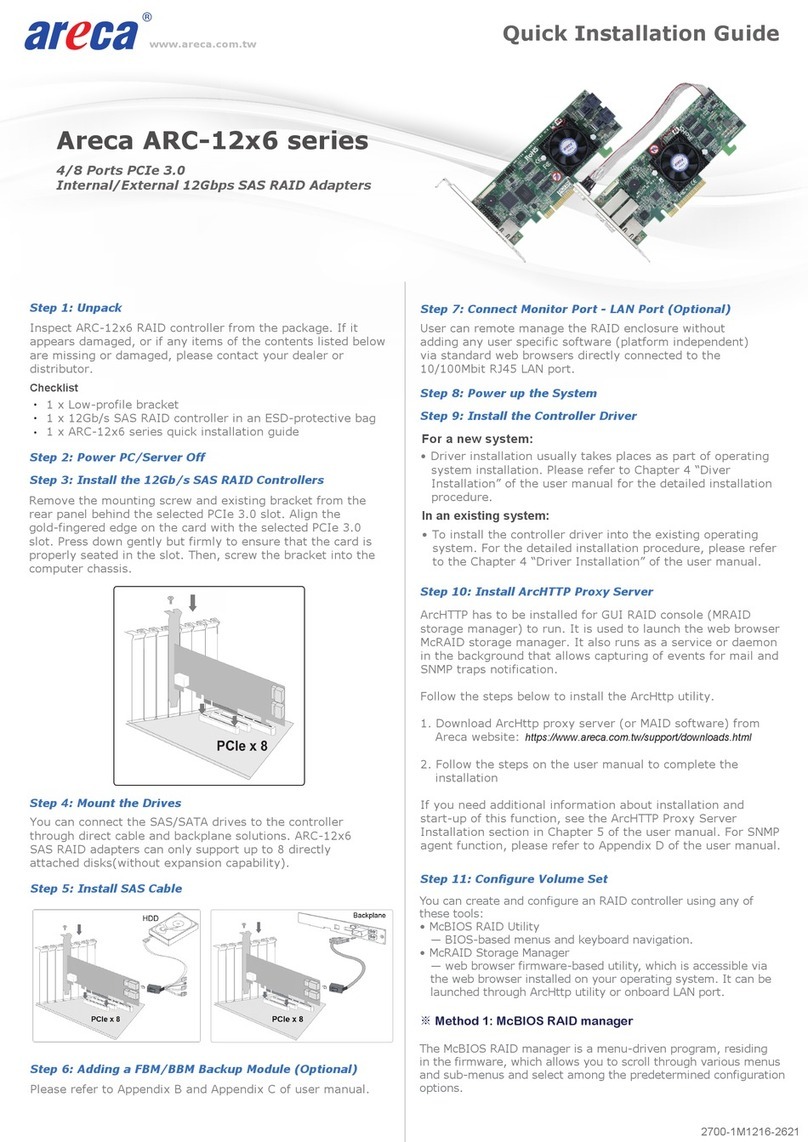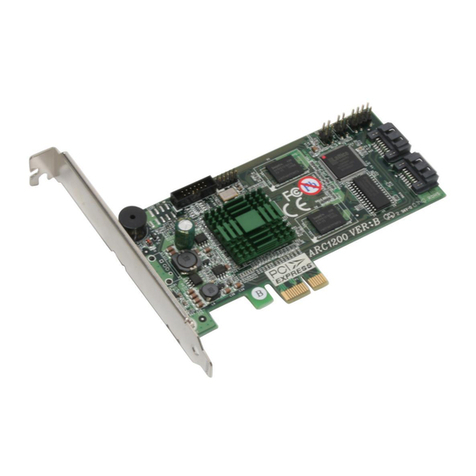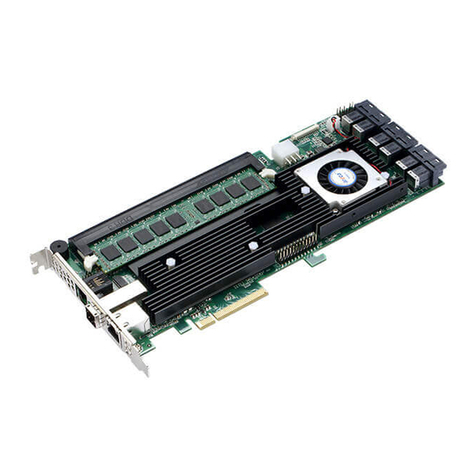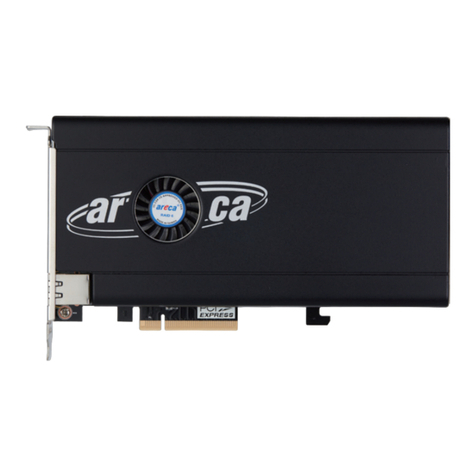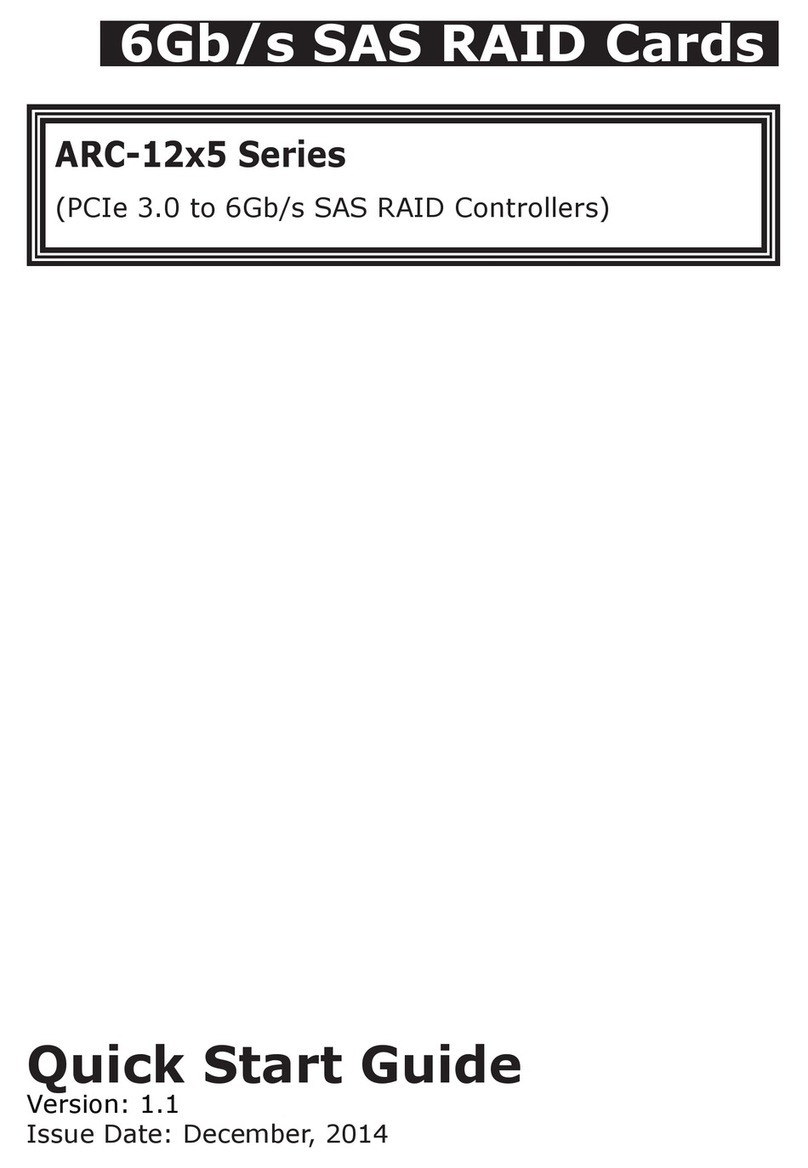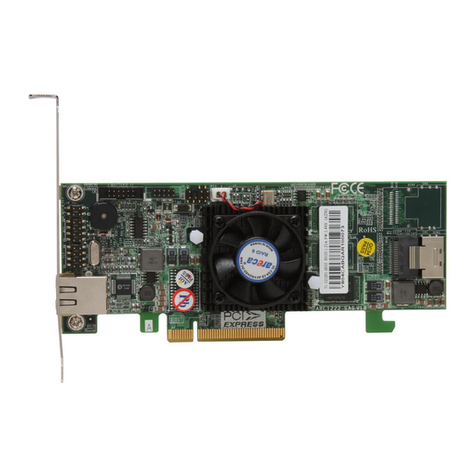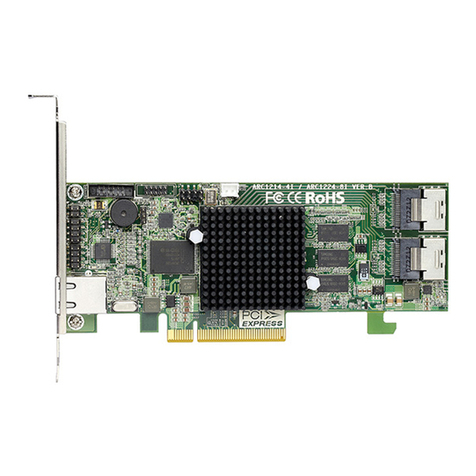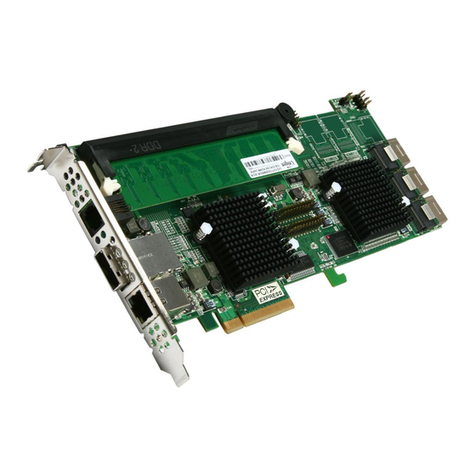5.5.3.1.2.3 Raid Level ..................................................... 110
5.5.3.1.2.4 Strip Size ...................................................... 111
5.5.3.1.2.5 IDE Channel .................................................. 111
5.5.3.1.2.6 Drive Select .................................................. 112
5.5.3.1.2.7 Cache Mode .................................................. 113
5.5.3.1.2.8 Tag Queuing .................................................. 113
5.5.3.1.2.9 IDE Xfer Mode ............................................... 114
5.5.3.2 Delete Volume Set ................................................ 114
5.5.3.3 Modify Volume Set ................................................ 115
5.5.3.3.1 Volume Expansion............................................. 115
5.5.3.3.2 Volume Set Migration ........................................ 117
5.5.3.4 Check Volume Set................................................. 117
5.5.3.5 Stop Volume Set Check ......................................... 118
5.5.3.6 Display Volume Set Info. ....................................... 118
5.5.3.6.1 For ARC-6020................................................... 119
5.5.3.6.2 For ARC-5030................................................... 119
5.5.4 Physical Drives.......................................................... 119
5.5.4.1 View Drive Information ......................................... 120
5.5.4.2 Create Pass-Through Disk ...................................... 120
5.5.4.2.1 For ARC-6020................................................... 120
5.5.4.2.2 For ARC-5030................................................... 121
5.5.4.3 Modify Pass-Through Disk ...................................... 122
5.5.4.4 Delete Pass-Through Disk ...................................... 122
5.5.4.5 Identify Selected Drive .......................................... 123
5.5.5 Raid System Function ................................................ 123
5.5.5.2 Alert Beeper Setting.............................................. 124
5.5.5.1 Mute The Alert Beeper .......................................... 124
5.5.5.3 Change Password ................................................. 125
5.5.5.4 JBOD/RAID Conguration ...................................... 125
5.5.5.5 Raid Rebuild Priority.............................................. 126
5.5.5.6 Maximum SATA Mode ............................................ 127
5.5.5.7 HDD Read Ahead Cache......................................... 127
5.5.5.8 Stagger Power On................................................. 128
5.5.5.9 HDD SMART Status Polling ..................................... 129
5.5.5.10 Disk Capacity Truncation Mode.............................. 130
5.5.5.11 Terminal Port Conguration .................................. 131
5.5.5.12 Update Firmware ................................................ 131
5.5.5.13 Restart Controller ............................................... 132
5.5.6 U320 SCSI Target Conguration (ARC-6020 only) .......... 133
5.5.7 Ethernet Conguration .............................................. 133
5.5.7.1 DHCP Function ..................................................... 133
5.5.7.2 Local IP address ................................................... 134
